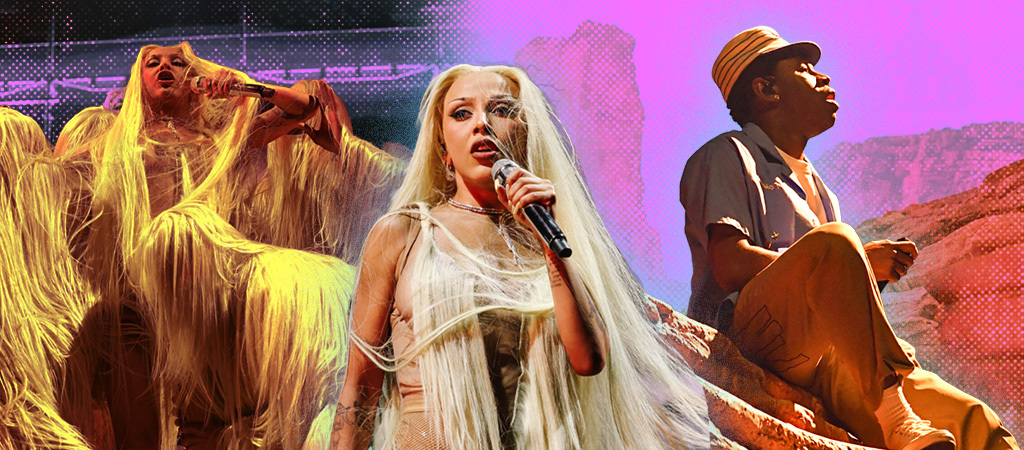
The collaborative nature of the music business is critical to its success, but often that collaboration is done in the shadows, outside of the spotlight. The successes are loud; the planning, the building, the making, the doing –- that part can be all too quiet.
Enter Silent House Group.
When Tyler The Creator wants to blast through the side of an RV like a human cannonball to open his headlining set at Coachella, or when Doja Cat needs a life-size T-Rex skeleton to traipse around onstage during her own set a couple of days later, Silent House makes it happen.
While fans may not think much about how and why these things come to life at live shows, that’s all the creative directors at the production company — which was founded in 2010 and has produced shows for everyone from Drake to Taylor Swift — think about. Alex Reardon, — the President of Silent House, creative director on Tyler The Creator’s Coachella set, and inaugural Sound + Vision Award winner for Tyler’s Camp Flog Gnaw performance — explains how he uses his 20 years of experience in creating live shows to pull all the pieces together to make the rapper’s wildest dreams a reality.
“T comes up with the overall, the 30,000-foot view ideas, and then we riff on things,” he says over Zoom a few days before the explosive Coachella performance. “If we are in this world that he is creating, what would that world look like?” That entails a lot of questions of both entertainment value and feasibility — and, in some cases, safety.
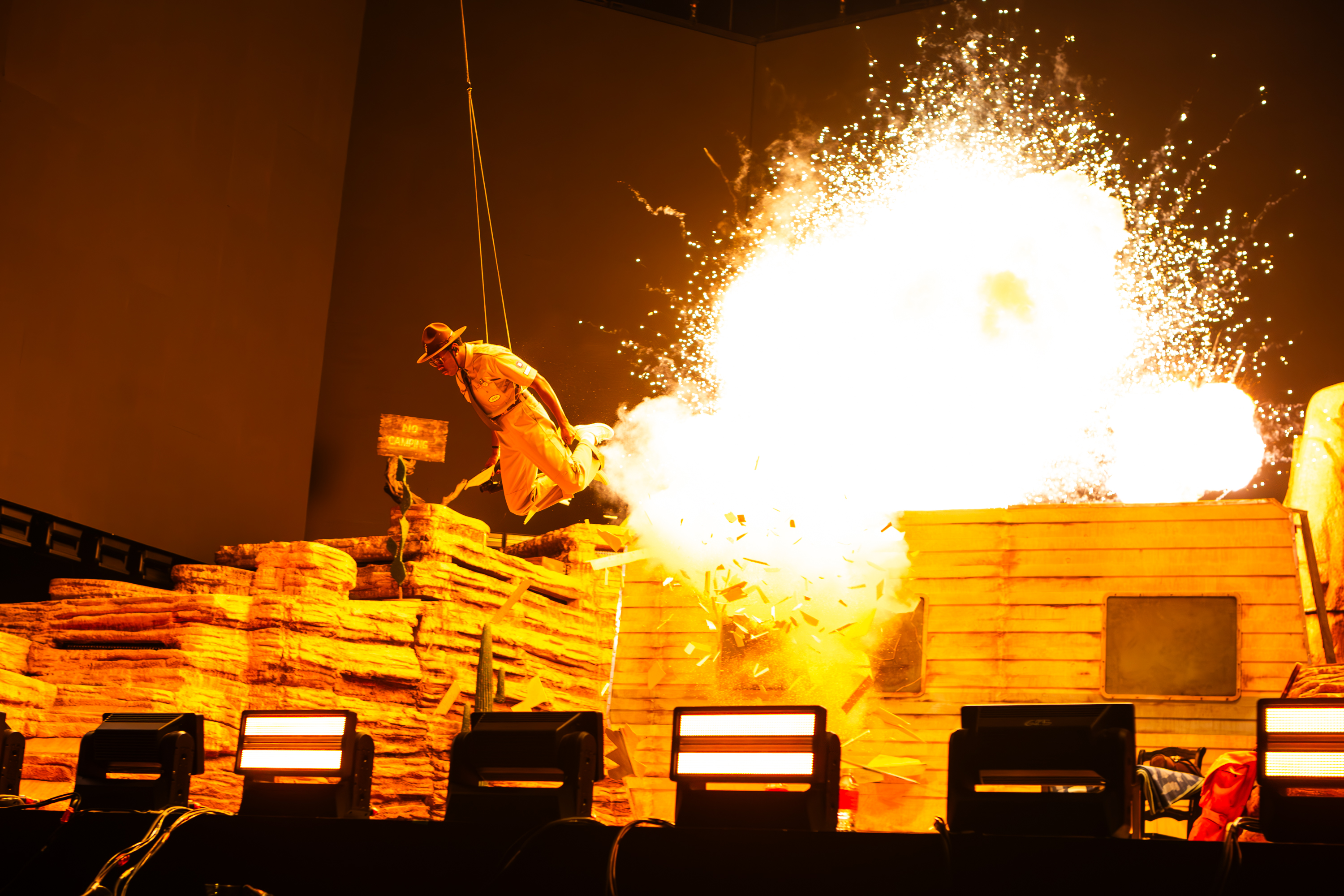
“I believe very strongly that a successful production design is not just about aesthetics,” he says. “It’s about aesthetics, logistics, and finance. One of those is fun, and two of them aren’t, but they are all equally important. And all those bars have to be set to exactly the same level.” When those elements are all aligned, the closest thing in the world to magic happens… like flinging Tyler through the air or outfitting him with a literal flamethrower for his Camp Flog Gnaw set a few months ago.
In order to build out a set like Tyler’s, the designers at Silent House first sit with artists and their teams as they spitball about their vision. While that can be highly informed by specificity and attention to detail, like Tyler’s set, it can also mean just getting the artists’ thoughts on what’s going on their lives, as Silent House’s creative director and designer for Doja Cat’s set Parker Genoway says in a separate interview on the same day.
“It all starts with very abstract conversations and a lot of listening,” he elaborates. “I never present anything, even if I am so excited about something and I am like, oh, this is going to be great for her show. I like to sit with her for hours — and Brett [Alan Nelson, Doja Cat’s Creative Director & Stylist] — and just have her download me on where her head is at, and then I start to pick up on certain things, [like] what materials fit into these descriptions that she is talking about.”
With Doja Cat’s set, her inspirations — or preoccupations, maybe — were clear even without knowing the behind-the-scenes process. Having dancers surround her in costumes make of wigs like really jiggy versions of Cousin It from The Addams Family played into fans’ obsession with her recent big chop, while that T-Rex skeleton evoked the titanic proportions reached by the conversation surrounding her bat skeleton tattoo (those dancers, by the way, were choreographed by Parris Goebel, who also coordinates dancers for Rihanna). Rather than telling a story, Doja’s set created a vibe, like a subconscious clash of imagery and ideas in a dream.
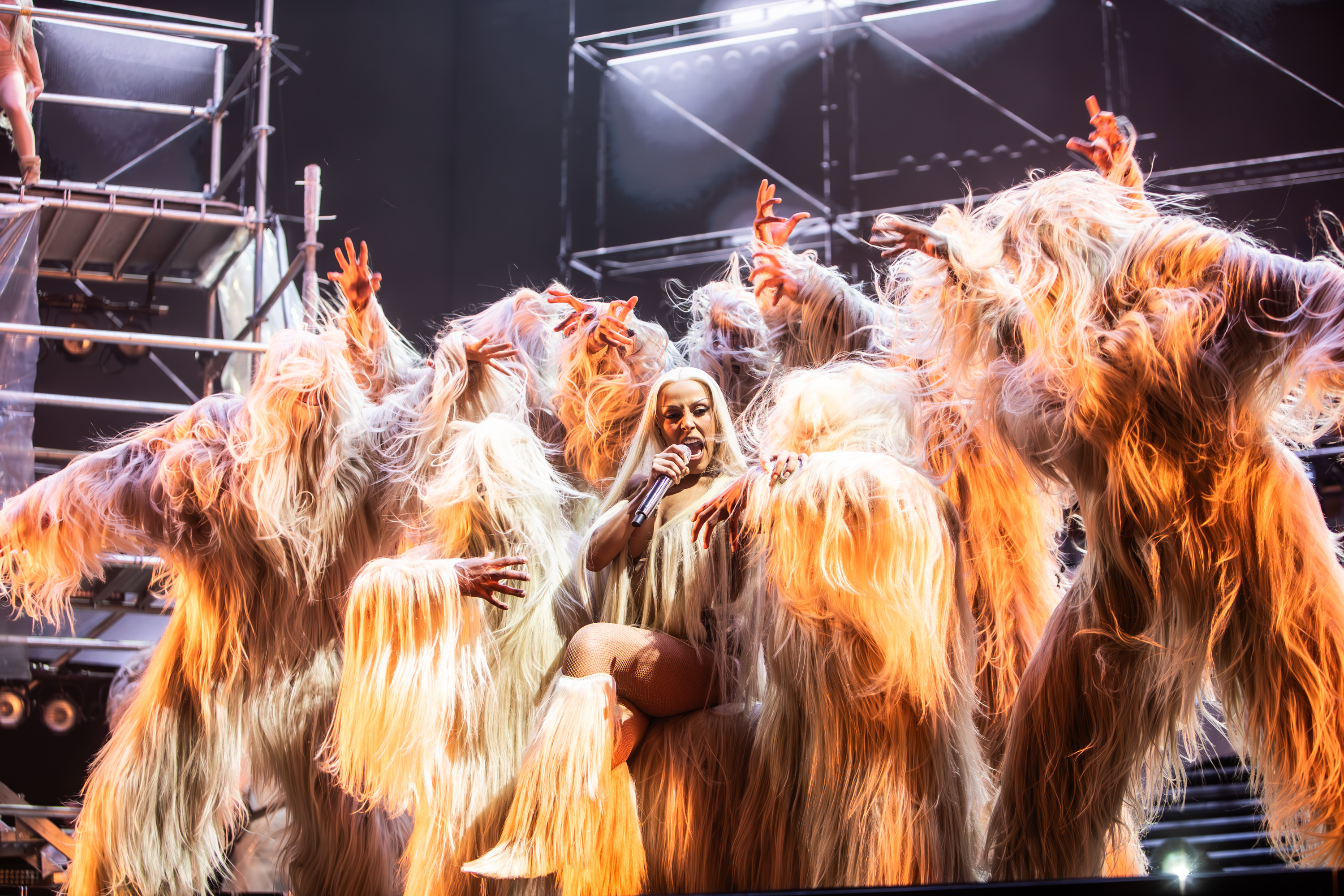
“She was always like, ‘I want a dinosaur. I really want a dinosaur,’” Genoway recalls. “And so when we started thinking about, ‘Let us work backwards. What kind of world could this be? Is this prehistoric or is this post-apocalyptic? Has society crumbled?’… I think when I like to create a world, I want layers and I want versatility, and I want to be able to deliver a show that evolves and does not just stay the same the whole time.”
Meanwhile, Tyler’s set plays into an existing world he’s created around his most recent album and his ongoing fascination with nature and the outdoors. For Reardon, making that world seem plausible and real is the key to success. “If the question ‘why’ has been asked and a legitimate answer to ‘why’ has been given, then a big video screen works,” he maintains. “If you’re doing it without intent, there is never a purpose to do anything other than lasers… We add more so it’s believable because you’ve got to sell the thing. Don’t just put a prop there. Make the prop do what the prop would do if it wasn’t a prop.”
Creating these expansive, detailed worlds from scratch can be a time-intensive process, but it’s also one that requires fine-tuned people skills. After all, artists can be both sensitive and fickle. As Reardon says, “Artists may say, ‘I want my stage set to look like an apple.’ And you give them an apple and then they say, ‘I hate apples.’”
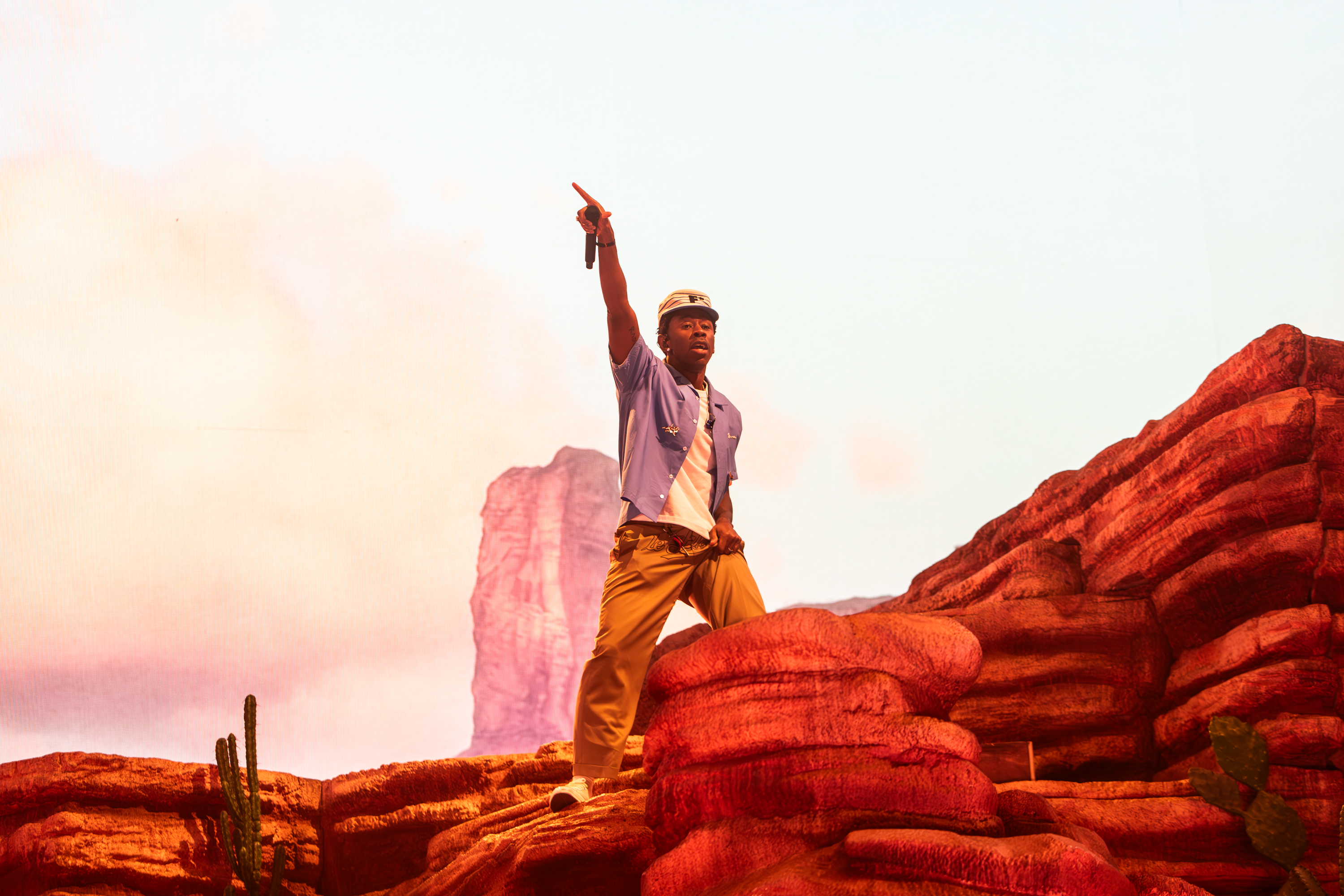
“The way to mitigate that is by understanding a couple of things. First of all, anything you create, even if it’s for someone else, has your ego in it. And you have to understand the power of the unobserved ego. If you don’t accept that your ego is part of it, you will not be able to mitigate the effects your ego will try and have on you in that design process. And someone who hasn’t observed their ego, who doesn’t understand the power of it, the negative impact it can have will say, ‘But you said you liked apples and you have to have an apple and I’m going to make…’ No. Next idea. Okay. Don’t like apples? How about whatever palm tree? Banana. Go through the fruit bowl.”
Genoway echoes this sentiment. For him, what makes Silent House distinct as a production company is that “we are extremely practical in our designs. We make doable things. So the logistics of things are heavily considered in our initial design conversations. As much as we like to try to keep it very blue sky, we are from day one considering what can and can not happen, what the parameters are, how many trucks we have, how many buses are there, so we know how many crews.”
In describing the process of building the concepts — starting with concept art, which can be sourced from sources like magazines, design books, and even AI art, to decks of renders created with computer-aided design programs to concept models — Genoway says the process can take months, but that things can be done last-minute, as well, depending on when Silent House is contracted to build a set. The most nerve-wracking aspect for him, though, is knowing that even with rehearsals weeks before, there’s no telling how everything will really work until the night of, when any number of factors can affect the set.
One stunt involving a massive wall of flames that Genoway says has never been done at Coachella before was nearly nixed because of high wind (it went off went out a hitch on Sunday, and looked badass to boot). He also credits the on-the-ground teams for being able to handle problems on the fly, like broken wheels on the scaffolds used in the set — something to which he, like Reardon, credits to Silent House’s experience as one of the few big-name production agencies working at this scale.
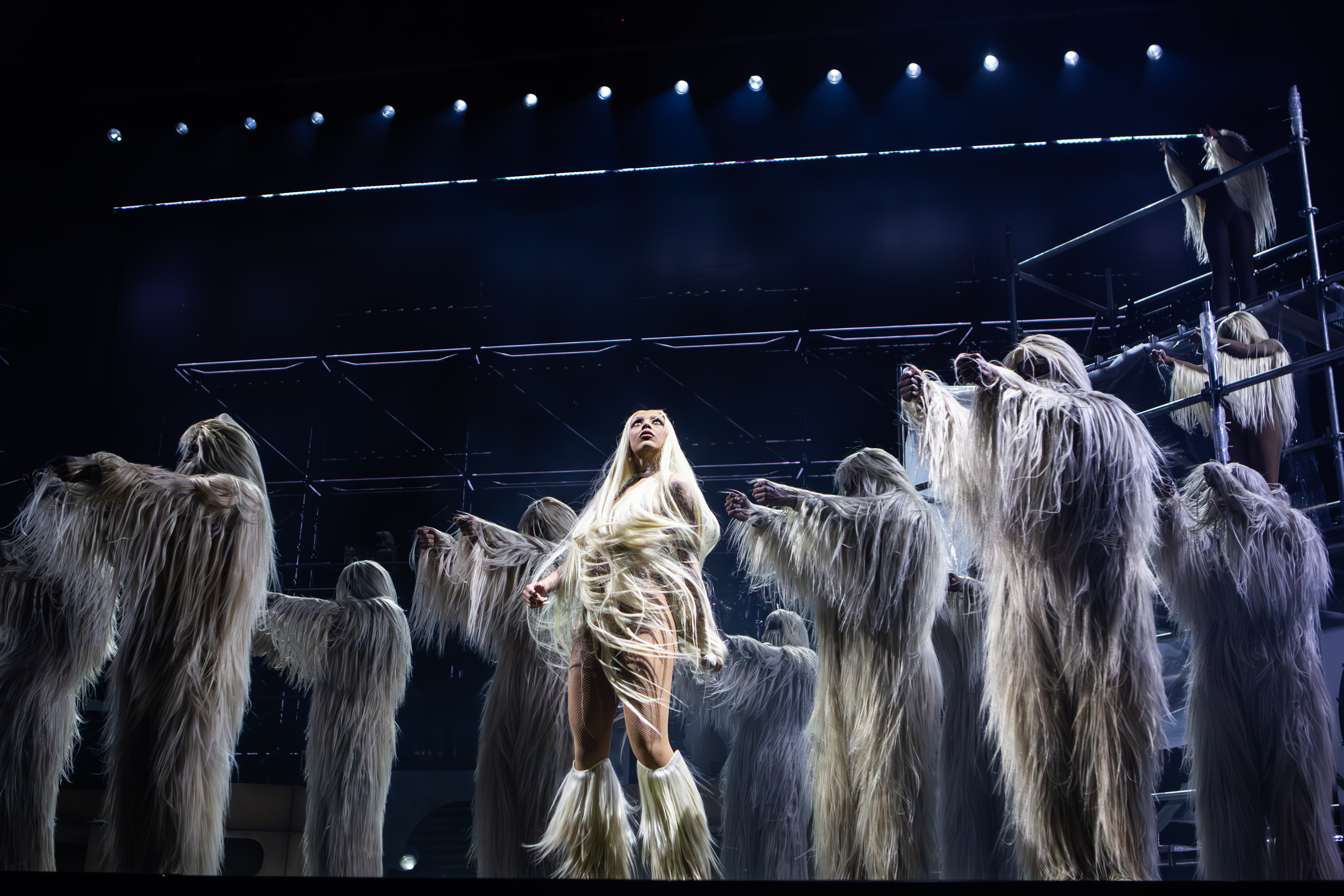
But the most important aspect, both directors agree, is their rapport with the artists, whom they both praise as not just creative geniuses but genuinely great people. As Reardon muses, “I don’t know how it became part of our pop culture zeitgeist that diva is used as an accolade. It shouldn’t be. Don’t be the diva. Be the nice person. And [Tyler] is so genuine and considerate and curious and kind and respectful that everybody goes just that bit further because you want to. I’ve been doing this since I was 21, and I’m 58, and I can count on the fingers of one hand how many people that I just think, ‘You are a genuinely good human being. I am very happy to be here. I will work a bit harder. I will have a little bit less sleep’ because he’s worth it in the end.”
Of Doja, Genoway is equally effusive, “She is always moving into a new world, and so it is so exciting and challenging to be able to try to follow her in which direction she is trying to go and make sure that we are supporting her vision and executing it… I am so thankful for our entire crew and for Doja, for her whole management team and everyone just for putting in the work because it is going to pay off.”
That work, done out of the spotlight and away from the cameras for months and months to create a 90-minute moment for both the artists and their fans, may not always get the attention and appreciation it deserves, but the creators at Silent House know it’s worth it. After all, where else can a self-described “weird theater kid” like Genoway or a 38-year touring vet like Reardon get to make not only their own dreams come true, but also those of these talented artists? When the moments being built are all anyone will be walking about for days afterward, the work done in silence can often speak the loudest.
